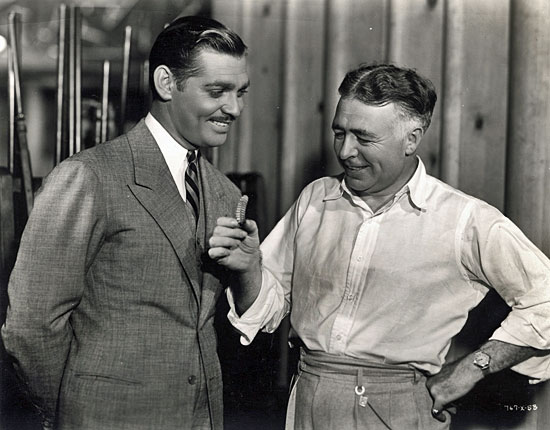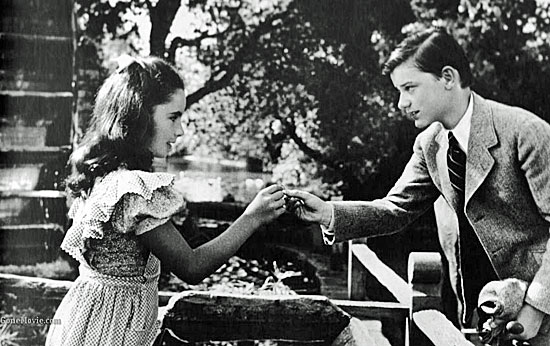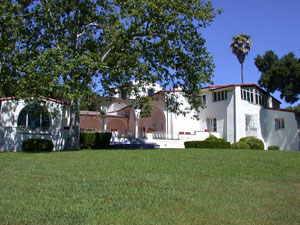Old Hollywood lives on in mountains
February 23, 2012

Director Clarence Brown, right, worked with his friend Clark Gable on movies such as "Wife vs. Secretary."
This weekend, you could be mulling the merits of “The Artist” versus “The Descendants,” wondering what Rooney Mara will wear on the red carpet, or anticipating where Billy Crystal’s ad libs will take him.
Or you could be taking a walk in the footsteps of an all-but-forgotten movie giant named Clarence Brown—who never won an Oscar despite multiple Best Director nominations but is nevertheless enjoying a small measure of fame these days thanks to a Mountains Recreation and Conservation Authority volunteer named Michael Mooney.
Mooney has spent countless hours poring through National Parks Service archives and old newspaper articles to find out more about the life and times of Brown, who from 1930 to the early 1950s owned the legendary spread known as King Gillette Ranch. Mooney was joined in his research by National Parks Service Ranger Mike Malone, whom he describes as a “movie buff.”
For the past year, Mooney has been leading tours around the King Gillette property where Brown, once a spectacularly successful director for MGM, lived, worked and played with some of the biggest stars of Hollywood’s Golden Age.
How big? Well, Brown directed the young Elizabeth Taylor in National Velvet, worked with Greta Garbo in her first talkie, Anna Christie, directed Lionel Barrymore to an Oscar in A Free Soul, and gallivanted around with pals like Clark Gable.
And the King Gillette Ranch was central to much of the action—filming and social. Brown used it as a location for filming a number of motion pictures, including The White Cliffs of Dover, in which a young (uncredited) Elizabeth Taylor and Roddy McDowall held hands in a meadow on the property. There was also an airstrip, now vanished, where stars arrived for MGM “fly-in parties.” And a motorcourt on the estate once held a Rolls Royce limousine and other emblems of over-the-top wealth.
“It was one of those grandiose times,” Mooney says, noting that Brown commuted to work in Culver City from the ranch via open cockpit bi-plane.
Brown, who graduated from the University of Tennessee with a degree in mechanical and electrical engineering and owned an early automobile dealership before getting into the nascent movie biz, also did a fair amount of tinkering at the ranch, Mooney says.
His mechanical innovations included building a platform to mount a camera on the front of a car, as well as a wheeled camera dolly, Mooney says.
The ranch itself, which Brown sold to an order of the Catholic Church in 1952, is now public parkland. But its Hollywood connection is still alive and well on the small screen; the Wallace Neff-designed compound is now the setting for The Biggest Loser TV show.
As for Clarence Brown, his one-time property is still helping to tell his story, a quarter-century after his death at age 97 in Santa Monica.
There do not appear to be any close remaining family members. And for all of his movieland accomplishments, the oft-married Brown may not have been a particularly warm and fuzzy guy. “Most of his wives called him cold,” Mooney said. “He wasn’t ‘Ozzie and Harriet.’ ”
Still, Mooney, a real estate appraiser and Mountains Recreation and Conservation Authority volunteer since 2009, can’t help but marvel at the lives that Brown and his cronies lived.
“This was the heyday of the glory of the movie industry,” he said. “They could afford to do anything.”
Mooney’s easy two-hour walking tour, “Innovation in the Golden Era,” takes place on Saturday, Feb. 25, at 10 a.m. Details are here. Admission is free, but there is a $7 fee to park.

A young Elizabeth Taylor filmed a scene from "The White Cliffs of Dover" with Roddy McDowall at the ranch.
Posted 2/23/12













 405 bridge work causes a stink
405 bridge work causes a stink
